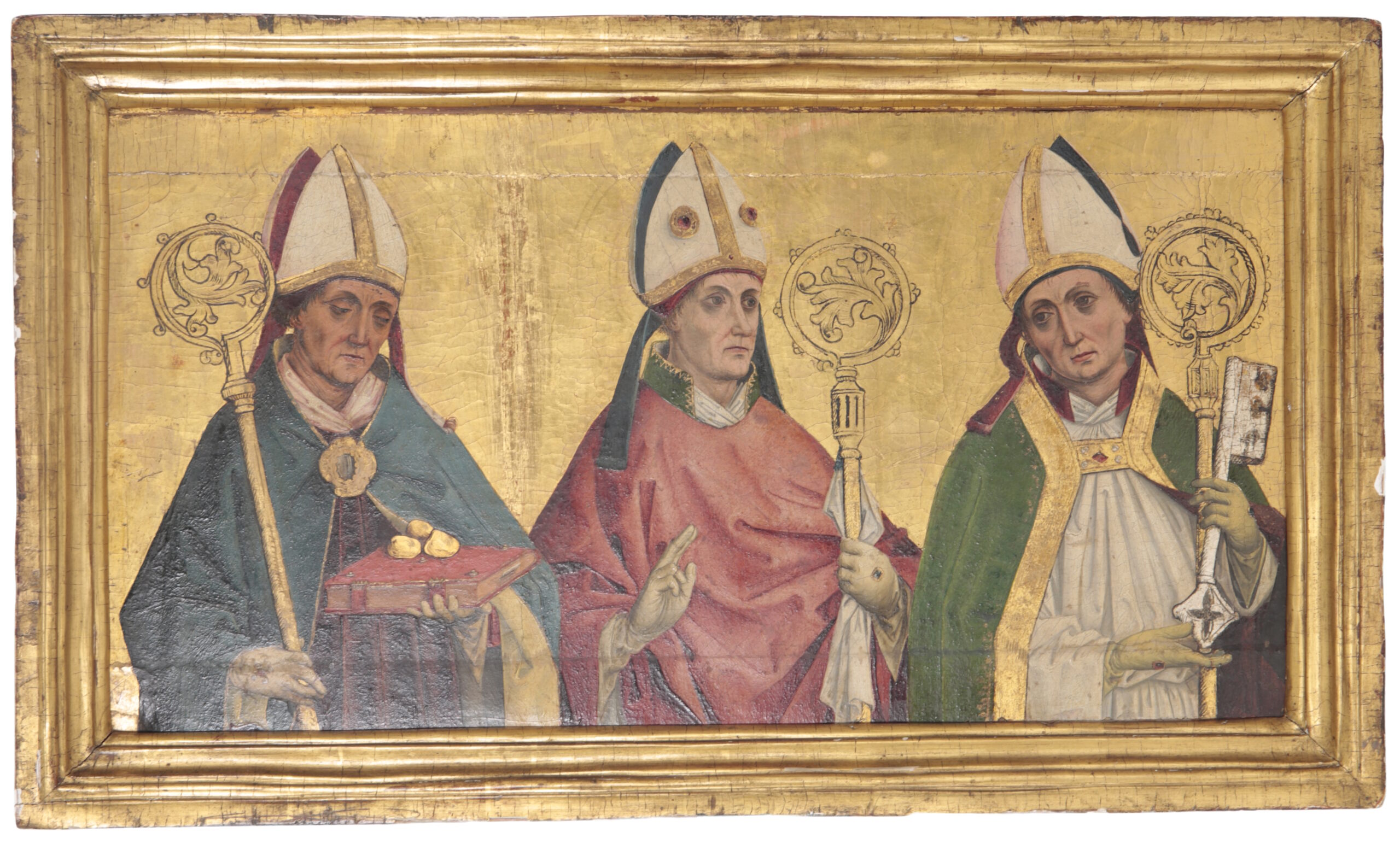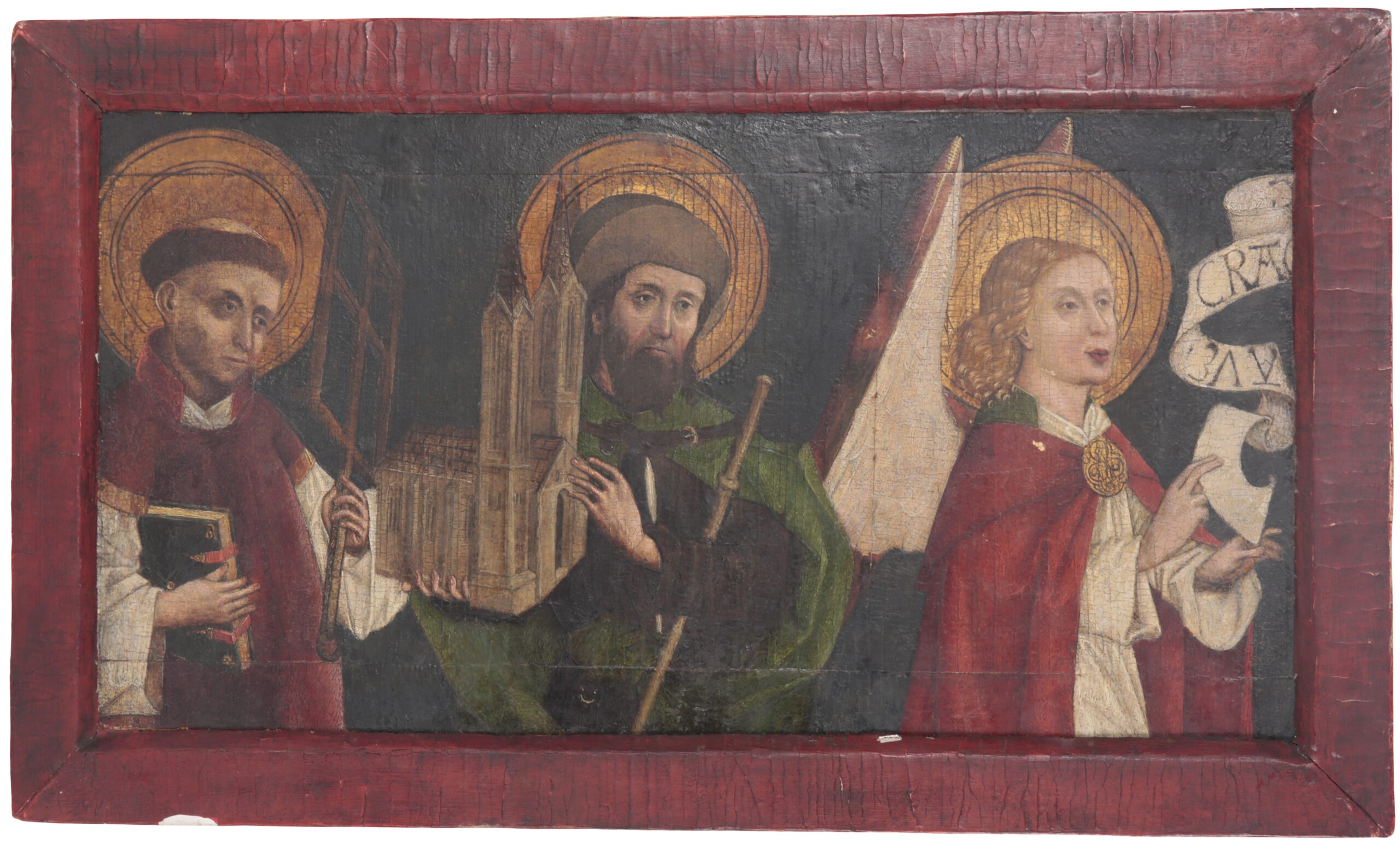A 15th century altar panel stolen on November 13, 1979, from the York Art Gallery has been returned after turning up at auction. It was Duke’s Auctions’ experts who spotted the possible connection to the long-lost York panel and pulled it from the auction. They asked the Art Loss Register to look into its history, and they concluded that it was indeed the panel stolen 44 years ago.
Duke’s had come to auction off the panel after examining the contents of a house in the Southampton area, but the vendor knew nothing of the panel’s background, having inherited it from her father. Schwinge believes the original collector most likely bought it at a market or an auction house without knowing its provenance.
“We told the daughter that the painting was stolen 50 years ago and she was quite happy that it was simply returned to the museum,” Schwinge said. “No money changed hands at all. We are so grateful to her for being so straightforward about it.
The gold-ground double-sided painting of the Nuremberg School was one of a pair donated to the museum by Francis Dennis Lycett Green in 1957. He had acquired them from a London art gallery in 1956 and donated them to the York museum. He was its most important benefactor, having given the York Art Gallery his entire painting collection of 150 pieces in 1955.
The front on the altarpiece depicts three saint bishops against a gold background. The figure on the left is St. Nicholas. He is holding a book with three gold balls, representing Santa’s throwing gold into the windows of three impoverished women for their dowries. In the middle is St. James of Tarentaise. On the right is St. Germanus of Paris, holding the key given to him by St. Peter in a prophetic dream.
On the verso side is St. Lawrence holding a gridiron (representing his martyrdom by roasting) on the left. In the middle is St. Sebald, patron saint of Nuremberg, holding a model of the church that bears his name. On the right side is the Archangel Gabriel holding a furled banner with part of his greeting to the Virgin Mary at the Annunciation (Ave Maria Gratia Plena).
The panel’s pair, which is still in the York Art Gallery, depicts Dominican saints. Against the gold background are St. Catherine of Alexandria on the left, St. Barbara in the middle and St. Dominic on the right. On the other side are St. Catherine of Siena on the left, St. Ursula in the middle and St. Thomas Aquinas on the right.
There is no ownership information about the panels before 1930 when they first appeared at auction in London. German scholars attribute the panels to the workshop of Hans Pleydenwurff, one of the pre-eminent artists working in Nuremberg in the late 15th century. The York panels began as the wings of a larger altarpiece, perhaps the Catherine of Siena altarpiece made by Pleydenwurff’s workshop for the Dominican convent in Nuremberg.
The panel is now undergoing examination and conservation at the York Art Gallery. When the work is complete, the prodigal panel will be reunited on display with its sibling.


The selection of saints may seem a bit awkward: There is a St. ‘Nicholas und Ulrich Church’ in Nuremberg Mögeldorf, and St. Ulrich had been bishop of Augsburg. Hence, what is St. James of Tarentaise (Savoy) and St. Germanus of Paris doing on there?
Since 1397 St. Sebald is buried in St. ‘Sebaldus Church’ in Nuremberg. The later St. ‘Lorenz Church’ in Nuremberg, however, is dedicated to St. Lawrence of Rome, only Gabriel does not seem to have a church.
In addition, the “other panel has saints Catherine of Alexandria, Barbara, Anthony Abbott on the recto (main illustration) and saints Catherine of Siena, Ursula, Dominic on the verso”.
——–
The Dominican convent in Nuremberg was part of the Archdiocese of Bamberg, Hans Pleydenwurff’s place of birth. Apparently, Pleydenwurff had been the master and/or workshop owner before Michael Wolgemut, who in return inherited to Albrecht Dürer. Maybe, the whole thing ran a bit out of fashion during Reformation:
In March 1525 Nuremberg became Protestant. At least Dürer himself was seemingly convinced, when he noted:
Second visit to Cologne, 1520: “I have bought a tract of Luther’s for 5 white pfennigs besides 1 white pfennig for the Condemnation of Luther”.
On his return from the Low Countries in 1521: “..if Luther is dead [Luther died in 1546, Dürer in 1528], who will henceforth expound the Holy Gospel so clearly to us! Ah, God, what might he not have written for us in the next ten or twenty years!’ – Oh, all ye pious Christian men, help me to lament this God- inspired man and pray to Him that He will send us another enlightened man…”.
👍🏻